#m@plover
Explore tagged Tumblr posts
Text
I WANT ROBUXXXX
5 notes
·
View notes
Text




A Feathursday in Wading
This week we present a few wading birds -- some by lakes and rivers, some by the seashore -- rendered in black and white and hand-colored wood engravings by British author and wood engraver Eric Fitch Daglish (1892-1966) from his 1948 publication Birds of the British Isles, published in London by J. M. Dent & Sons in a limited edition of 1500 copies. Shown here from top to bottom are:
Ringed Plover (Charadrius hiaticula)
Pied Avocet (Recurvirostra avosetta)
Eurasian Oystercatcher (Haematopus ostralegus)
Eurasian Bittern (Botaurus stellaris)
Birds of the British Isles is a donation from our friend, Wisconsin wood engraver Tony Drehfal.
View more posts from this volume.
View more Feathursday posts.
#Feathursday#Birds of the British Isles#Eric Fitch Daglish#J. M. Dent & Sons#wood engravings#Ringed Plover#plovers#Pied Avocet#avocets#Eurasian Oystercatcher#oystercatchers#Eurasian Bittern#bitterns#birds#birbs!
151 notes
·
View notes
Text
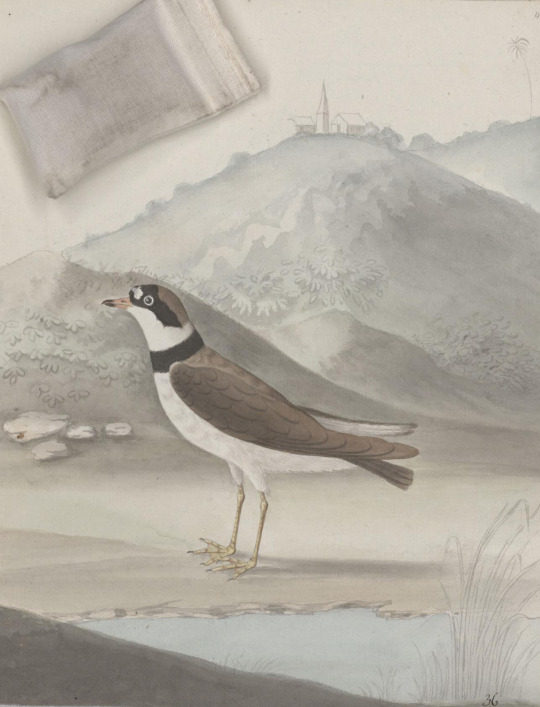
Semipalmated plover (Charadrius semipalmatus)
Part of a collection of watercolors by "M. Rabié" for St. Domingue Oiseaux. Dated 1766.
Internet Archive
85 notes
·
View notes
Text
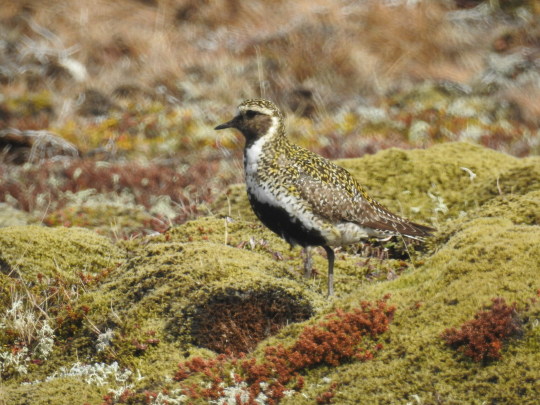
European Golden Plover Pluvialis apricaria Mosfellsbær, Iceland 64.114527, -21.507407 by johnharshman
#birds#european golden plover#pluvialis#charadriidae#family charadriidae#charadriiformes#order charadriiformes#shorebirds#shorebirds and allies#plovers and lapwings#iceland#icelandic birds#mosfellsbær#m#on birds
17 notes
·
View notes
Text
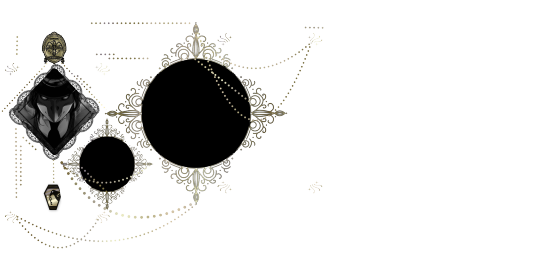
What if Crowley uses "bird" vocabulary like Floyd with his marine nicknames....
Yes he's a crow ... Just imagine if he sees us as biiiiird~
Of course it's just my point of view, I am not a professional in ornithology, you might have your own idea about this one and I would definitely want to hear about it!
Mostly they are birds we could see in my country...
Let's go:
Ombrorio
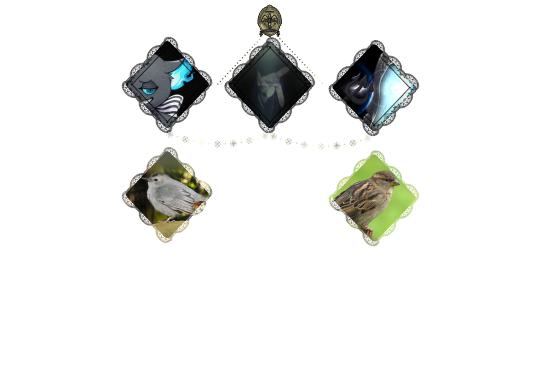
Grim(m) -> Grey catbird (grey like Grimm, striped wings and can make cat noise....yes)
Yuu(sona) -> Sparrow (Crowley would definitely call Yuu a little sparrow....)
Night Raven College staff

Sam -> Painted bunting (small, vibrant, colorful, a rare sight to view)
Mozus Trein -> Eurasian skylark (classy, well known literally a french song about this bird "he sung it to Lucius as a kitten")
Ashton Vargas -> Pheasant (....the irony as his Disney counterpart is an hunter, but vibrant color)
Divus Crewel -> Great spotted woodpecker (literally screaming I am Cruella, fashion red, black and white bird)
Heartslabyul

Ace Trappola -> Nothern cardinal (red... funky feather style, fights their own mirror reflection...)
Deuce Spade -> Blue slaty bunting
Riddle Roseheart -> Robin (Hi Ciel Phantomhive...I mean Kuroshitsuji ref but look that little red face)
Trey Clover -> Nightingale (sorry Trey...Crowley is implying you can either sing...or can't...but you do have a perfect voice!)
Cater Diamond -> Pyrrhula (I love this little bird too....they became very rare by now, look this tiny orange one)
(Heartslabyul are literally the birds of Aurora in 2d "Sleeping beauty")
Savannaclaw
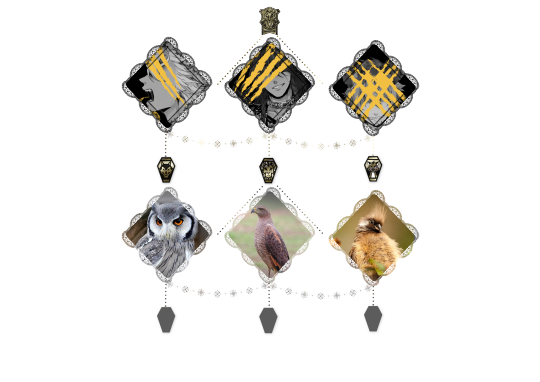
Jack Howl -> Owl (....this one is pretty obvious)
Leona Kingscholar -> "Savanna" eagle (yes... definitely a strong bird)
Ruggie Bucchi -> Speckled mousebird (listen to that bird you'll understand, also....that feather hairstyle!)
Octavinelle
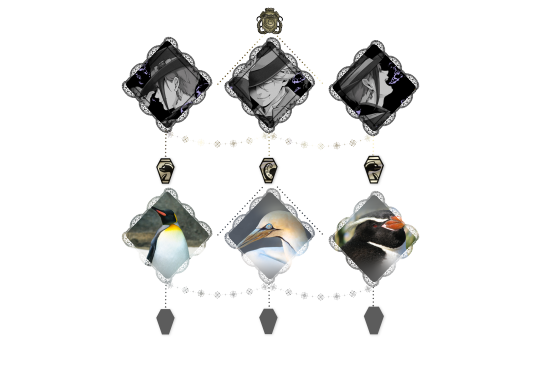
Jade Leech -> Emperor penguin (tall...classy ...can't fly pfff)
Azul Ashengrotto -> Nothern gannet (verrryyy big, analystic-smart one, can't walk on land...)
Floyd Leech -> Snare penguin (unique appareance, multiple various vocalized sounds)
Scarabia
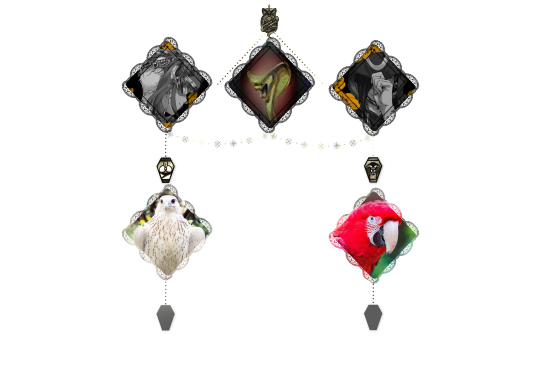
Kalim Al Asim -> White falcon (precious, royal bird in a "maybe similar related country in our world")
Jamil Viper -> Red Parrot (or macaw) (obviously because of Iago)
Pomefiore

Epel Felmier -> Snow bunting (a "petite robuste" bird living in snow)
Vil Schoenheit -> Peacock (beautiful, handsome literally The Evil Queen's bird)
Rook Hunt -> Mallard (another irony for an hunter...but this bird is beautiful I mean it, and is found everywheerrre (like a stalker bird ha ha))
Ignihyde
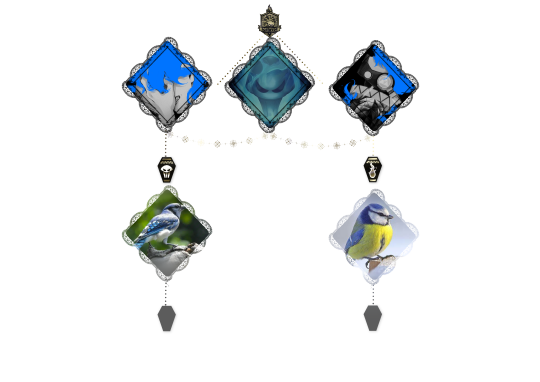
Idia Shroud -> Blue jay (blue, black and blue stripes, funny enough the bird is stated to be noisy ha ha, Idia can be supah noisy sometimes too when setting his boundaries, GG Idia!)
Ortho Shroud -> Eurasian blue tit (a little fluffy bird, blue and yellow doing a very cute melodious sound, I love watching them...)
Diasomnia
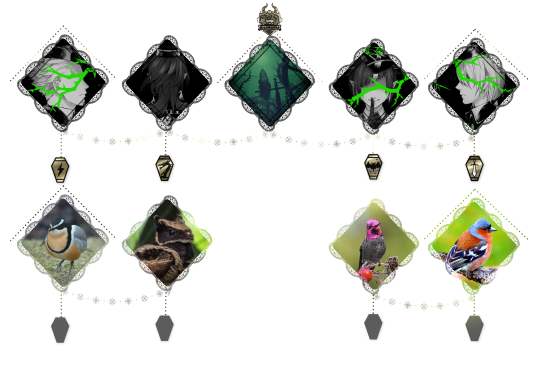
Sebek Zigvolt -> Egyptian plover (yes....the bird on the crocodile's back...yes)
Malleus Draconia -> Great eared nightjar (it's a dragon bird....look at him)/I could have chosen Casoar too... but nope...
Lilia Vanrouge -> Anna's hummingbird (it's small, pink and changes color with light...like his hairs)
Silver -> Nine-primaried oscines (a cute lovely bird in our woods, pink and blue)
Thanks National Geographic....
It's just pure fanon brainstorming... I'm sorry...
bird photos were mostly took from "Wikipedia"
167 notes
·
View notes
Text
District 4 Names
Alma (F)
Calder (M)
Caleb (M)
Ceto (F)
Cordelia (F)
Dorian (M)
Dylan (M)
Gaff (M)
Gwen (F)
Hull (M)
Isla (F)
Kellen (M)
Maeve (F)
Maren (M)
Maria (F)
Marlow (M)
Milo (M)
Naia (F)
Pike (M)
Plover (F)
Shoal (F)
Storm (F)
Tanith (F)
Zale (M)
More THG Names
17 notes
·
View notes
Text
#|3wd #|33333333k #|3 37 #|3333k #|333k#p3rvy thoughts #p3rv mommy #p3rv b4it#p3dOmom #p3dOdad #underag3 #under4g3#t33nie #t3nt4cl3 #t33333333333333#r@pe play #r@pe klnk #r@petoy#r@pe fantasy #r@pe kink #daddy's good girl#daddy's babygirl #daddy k!nk #m@p lover#m@plOver #1cky brOther #pervy brOther
6 notes
·
View notes
Text
Some out of context excerpts from the fic / one-shot (length pending) that I have been writing in-between essay drafts:
1. 'Okay luh-look. Don't take this the wruh-wruh-wrong way, okay? What m-m-made you change your muh-hind?'
'My mom committed a wizard war crime,' Eddie deadpanned.
2. Eddie grabbed the cat's head in his hands and held it like a burger, 'Who are you?'
'Patty,' the cat smiled, as much as a cat can smile. Eddie's hands slipped down to around "Patty's" ribcage. He proceeded to throw her across the room, directly into their bookcase.
3. Bill leaned heavily on Eddie's shoulder, 'Its uh-uh-official, Eddie, I'm ih-in love.'
'I'm pretty sure she's a bird, Bill.'
'It's love, Edward.'
4. 'Your cat called me a little bitch, today,' he called, before the door was even closed. The shuffling of pots stopped for a moment.
'No he didn't.' The pots continued to shuffle.
'Well no, but he called me a Egyptian plover and that's worse. I had to look it up. He called me the bird that eats out of crocodiles' teeth!'
#If you can guess what kind of au this is you get a prize (it isnt good you dont want it)#This is still draft 1 btw#So subject to change#I just love writing characters who are out of their element and very tired of it#Could've removed more context from 2 but it was important to me that ppl know there was a good reason for Eddie to throw any sentient being#it 2017#it 2019#eddie kaspbrak#it fanfiction#wip#fanfiction#Lost wips#Sh-It posting
4 notes
·
View notes
Text
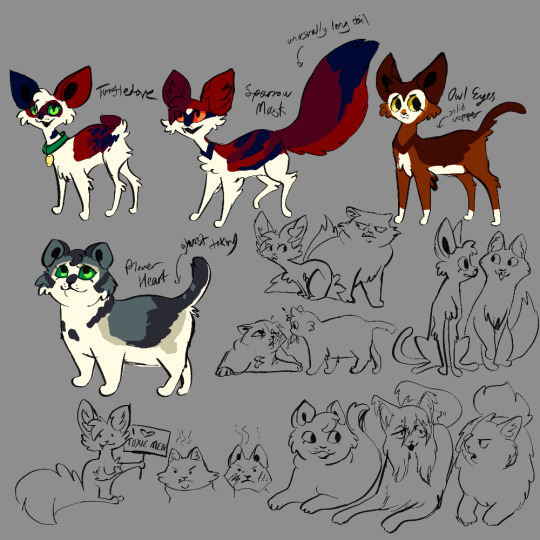
ough my attempts at drawing turtledove's (turtle tail) kits + turtle herself for comparison
sparrow fur -> sparrow mask; she's the og long bushy tail kitty and a direct ancestor of squilf
baby girl why do you like shitty toxic men so much
at least she'll become a leader, i'll change how she got there tho
pebble heart -> plover heart; his siblings and mom all have a bird theme, it'd be weird to leave him out
he smokes weed catmint w/ dappled pelt
in a better world, he got his calling as a future healer from saving a starving, injured bumble as a wee babe
owl eyes is brown now. like t*m
no thoughts on him, just drew him next to lightning tail for comparison
turtledove herself is now a kittypet who was gifted to the owner of tom and bumble. desiring freedom from her shitty boyfriend, she tried to leave him for gray wing, but uh, a lot of shit complicated that
#funny how all of turtle tail's kids became important#not that im complaining#turtle tail#sparrow fur#owl eyes#pebble heart#tom#clear sky#lightning tail#dappled pelt#cloud spots#wc rewrite
21 notes
·
View notes
Text
For Almost A Century, The Kuertz Family Guarded Hazelwood’s Natural Beauty
On the north side of Montgomery, a couple of nature preserves perpetuate the memory of Hazelwood, a once wild corner of Hamilton County. The Harris M. Benedict Nature Preserve is owned by the University of Cincinnati and the adjacent Johnson Preserve was donated to the City of Montgomery.
One hundred years ago, Hazelwood was rural enough to need its own deputy game warden. That role was filled by a truly eccentric gentleman named Louis Kuertz. Warden Kuertz knew the land around Hazelwood intimately and he knew many of the woodland creatures individually.
Rube, a crow, would alight on his hand or shoulder upon being called. When Kuertz hollered across the lake on his property, a turtle named Monte would rise from the lacustrine depths and waddle up to his feet. Kuertz was instrumental in having quail designated as a songbird – and therefore exempt from hunting – in Ohio.
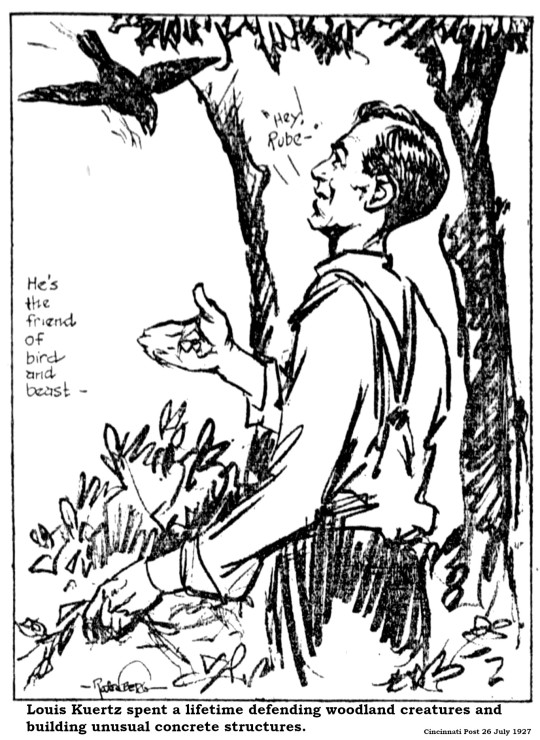
Kuertz worked variously as a truck farmer, a cabinetmaker and as game warden, and passed along his devotion for the natural world to his wife, Anna Belle, and especially his daughter, Gertrude. When Gertrude was just 12 years old, she inspired newspaper coverage because she would trek into the autumn woods to help her father locate poachers. The Cincinnati Post [4 November 1914] noted that Gertrude knew how to identify snipe, plover and quail and was proficient with a gun and fishing rod.
“Gertrude also studies butterflies and flowers and prefers books on botanical and avicular subjects to fairy tales. In winter she goes about in the woods scattering food for wild creatures that otherwise might starve.”
Gertrude’s affection for animals extended as well to domesticated varieties. In 1916, the Post ran a series of articles, allegedly composed by a turkey named Trixey as that chubby bird awaited the arrival of Thanksgiving. With all the build-up, the Post’s readers would have expected a traditional and savory end to the gag. Instead, on Thanksgiving Day, the Post located Trixey “in full bloom of life, smiling pleasantly” at the Kuertz farm. Gertrude was there to explain:
“’We do not slaughter our pets,’ said Miss Kuertz proudly.”
The article went on to list other animals who would not provide sustenance to the Kuertz family, including a red-haired pig named Ruddy, Nana the pony, Bossie the cow and Nanny, a goat of unusual variety donated to the Kuertzes by the Cincinnati Zoo.
“Ganders and geese, ducks and drakes, pigeons and chickens and pheasants and quail – all immune from the swish of the butcher’s knife.”
Gertrude also had a pet hawk. Her interests extended to the vegetable kingdom as well. When the Association for Preservation of Wild Flowers launched a campaign in 1921, Gertrude served as poster girl, holding a sign encouraging flower lovers to leave enough blooms to reseed for the next year.
There came a time when Frank Mills Jr. came courting and the Kuertz family naturally wanted to be sure he was as committed to environmental matters as their daughter. Mills derived from a well-known Cincinnati family. His father, Frank Senior, was the longtime director of the Cincinnati Athletic Club. A nude photograph of the elder Mills hung for many years at the club as an example of perfect manly physique. Apparently the Kuertzes approved, for a wedding date was set.
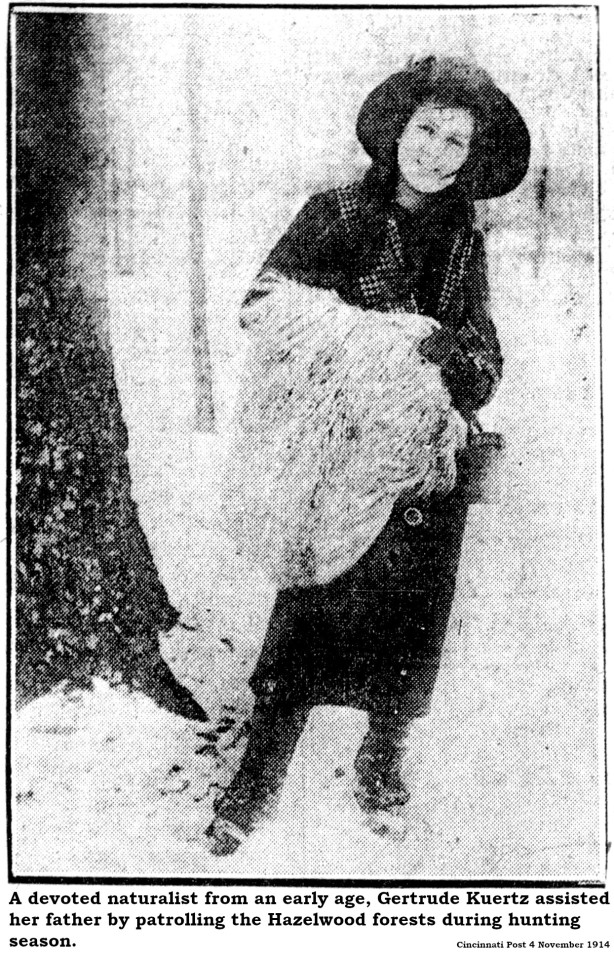
These days, it is considered conventional, if not downright old-fashioned, to be married in a church. A century ago, church marriages were the gold standard. Pretty much the only alternative to a religious venue was the local magistrate’s office. No one got married outside. Unless you were Gertrude Kuertz.
When Gertrude and Frank Mills said their vows on 3 October 1925, it rather caused a stir in Cincinnati social circles because the ceremony took place under the trees at the Kuertz family farm out in Hazelwood. The Cincinnati Post [8 October 1925] devoted several columns to the event:
“In what church was she to be married? She knew no place more sacred than the woods in which she had seen Creation march among her trees and touch them with life and where she witnessed since her childhood the gentleness of the divine love, even to the least of creatures. The woods were to be her church.”
As irregular as it might have seemed at the time, Gertrude’s outdoor wedding was officiated by the very proper Dr. Edward P. Whallon, described as “a minister of the Old School” in an official history of the Presbyterian Church.
The wedding culminated in a good-sized banquet, also served under the boughs of the great trees, illuminated by several bonfires. After the wedding, Gertrude’s appearances in the newspapers were largely confined to the gardening columns. She and Frank, a chemist by trade, excelled at growing almost anything except corn. Frank told the Post [7 July 1965]:
“There are too many varmints around. First the chipmunks dig up the seeds, then the rabbits eat the tender shoots and if there’s any left, the woodchucks strip the ears.”
And, of course, Gertrude would be opposed to shooting any of the brigands.
Gertrude and Frank lived most of their married life in a house personally constructed by her father on the family farm, next door to the house she grew up in. They raised a son and a daughter there.
Louis Kuertz had his own idiosyncratic architectural style that involved knocking together a rough iron framework and covering it with layers of stone and concrete. Kuertz built several such structures, including a bell tower for the local school, in the Hazelwood area. The house Kuertz built for his daughter was known to the nearby community as the Gingerbread House. It looked very much like the houses pictured in fairy tale books and had unique touches including dozens of nooks and crannies and a fireplace sculpted to look like a tree. All the doorknobs turned backwards and all the light switches were installed upside-down. Louis Kuertz died in 1933 and his ashes were placed under a memorial stone on the family estate.
Over the years, bits of the Kuertz farm were sold off. The Gingerbread House survived on a remnant acre until 1992, when it was sold to a developer by Gertrude’s daughter and was promptly demolished.
7 notes
·
View notes
Text











A look back on my 2024: Part 1 of 3-Birds and Lepidoptera
As those who have known me a while on here will know I have done end of year posts reflecting on my wildlife watching and photography year for a long time with the formats shifting a bit in recent years. This year I decided to do something different, my equivalent of a TV soap opera broadcasting a live episode, in that instead of writing up the posts in proceeding months and timing them to go out I am writing them all and posting them this morning/early afternoon.
Beginning with the main veins of my hobby really, birds and butterflies and my ever growing moth interest which obviously sits best next to butterflies. Firstly it was another phenomenal birdwatching year for me with so many species seen and excellent and precious experiences had. I didn’t necessarily know it’d be the case twelve months ago but I have seen over two hundred species of bird this year and the second highest amount I’ve ever seen in a year behind last year. Multiple Firecrest sightings and treasured Waxwing views in their big British winter brought vibrant colour and energy at the start of my year. Ferruginous Duck, Scaup and Red-breasted Goose were three fine rare waterfowl species I saw in Hampshire at the start of the year. The year once again hinged a lot on our sensational trip to Scotland in the spring where blockbuster species Red Grouse and Black Grouse, privileged views of Black-throated Diver, Red-throated Diver and Slavonian Grebe in gorgeous breeding plumage and Dipper were among my birds of the year. Following the cancellation of the accommodation for a holiday planned elsewhere in June we unexpectedly returned to the Yorkshire coast two years on from our last visit where we were immersed in the incredible spectacle of a seabird colony at RSPB Bempton Cliffs and nearby being spellbound to observe Gannets, Kittiwakes, Fulmars, Puffins, Guillemots and Razorbills. We saw two of Hampshire’s greatest birds of 2024 just before each holiday, only my second ever Marsh Sandpiper on Normandy Lagoon Lymington in late April and the Roseate Terns at the same place in May that went on to make history for the county and raise chicks. We were lucky to see another amazing bird in between the two holidays, Stone Curlews in Hampshire.
Three more of my favourite birds really stood out once more this year; mesmerising views of Ospreys in Scotland, Rutland Water, Hampshire and Dorset as I saw more than I ever did in a year, amazing times hearing and seeing Cuckoos in Hampshire, Scotland and Yorkshire in the spring with my first ever juvenile seen including being fed by its Dunnock host at Rutland Water in July and I had another very strong year for seeing electric Kingfishers. White-tailed Eagles seen in Scotland, Poole Harbour and the Isle of White, majestic Golden Eagle in Scotland, Hobby, riveting encounters with Short-eared Owl and Barn Owl and stirring encounters with Hen Harrier and Marsh Harrier made it another top year of birds of prey.
Green Sandpiper my two hundredth bird of the year at Rutland Water, Common Sandpipers seen well throughout the year, Purple Sandpiper, Little Stint, Little Ringed Plover, Whimbrel and Ruff at Slimbridge were key wading birds I saw this year. That Slimbridge trip in February with stop offs in Oxfordshire on the way there and back also producing heartfelt immersive views of Bewick’s Swans and Common Cranee. Super ducks Garganey, Goldeneye and Long-tailed Duck, Great White Egrets seen at some places I never or rarely had in Hampshire before as they continue to be common, January delights seeing Cattle Egret and Glossy Ibis and pleasurable encounters with Water Rail and Cetti’s Warbler especially at Fishlake Meadows where I visited a lot this year were other key birds seen. More stardust was sprinkled on my year with wonderful encounters seeing Yellow Wagtails in Yorkshire and Hampshire, Turtle Dove at Knepp and Tree Sparrows in Moray and Yorkshire. Other big birds of my year included Snow Bunting in November at Sandy Point, Wryneck at Titchfield Haven, amazing Lesser Spotted Woodpecker views in the New Forest, Whinchat, Spotted Flycatcher and Pied Flycatcher, Garden Warbler and Willow Warblers that invigorated me with their serenading song across the week in Scotland.
Close to home and it was an enjoyable and dramatic year of watching Winchester’s Peregrines with new female Mel overthrowing the much loved Winnie I had a good general Peregrine year and the formidable pair of Great Crested Grebes at my local Lakeside Country Park powered through two broods of chicks bringing many joyous moments watching them. Pochard and Tree Pipit were my two favourite unusual finds at Lakeside in January and September respectively. Sparrowhawk was nice to see at home a few times but my best garden bird title undoubtably goes to the female Black Redstart that made us ecstatic with multiple visits to and near the garden in January and February including during the RSPB Big Garden Birdwatch.
It was a challenging year for butterflies at times with weather patterns and general low numbers but I still loved watching them this year seeing forty three species the joint third highest I’d ever seen in a year. In spring early Red Admiral sightings were no surprise on sunny winter days with the sheer amount around in 2023 I wondered if confused hibernating individuals would be easy to come by. Small Tortoiseshell especially seen well in Scotland and Orange Tip like Cuckoo seen in Hampshire, Yorkshire and Scotland were wonderful hope bringing species seen at that time of year. Green Hairstreak, Marsh Fritillary, Adonis Blue, Small Blue, Brown Argus and Duke of Burgundy were excellent springtime gems which I felt lucky to see. Comma was an interesting species for me this year being the common one I had to wait longest for, usually expected to be one of the first I’ll see in a year it was my thirtieth species of the year seen at Testwood Lakes in June, I only had to wait longer (two days in fact) to see one in one other year 2018. Then intimate views of a Comma gave me one of my greatest summer memories on a perfect sunny and warm afternoon at Martin Down in July.
Those summer butterfly days were magical this year with Purple Hairstreaks duelling atop the oaks of Lakeside on fine and uplifting evenings and seen at Knepp where the epic Purple Emperors was one we were thrilled to see so well again, Brown Hairstreak flitting high in a tree at Shipton Bellinger and enigmatic Common Graylings on a New Forest heath. Dainty skippers the rare and prepossessing Lulworth Skippers at Durlston, fantastic views of lovely Silver-spotted Skipper and the satisfying sight of Essex Skipper were key species of my year. The blues shone over the summer too with captivating views of Chalkhill on the downs and Silver-studded in the forest. Butterfly Conservation’s Big Butterfly Count was an interesting time in July and August with initially the low numbers this year reflected in my counts before a surge in numbers on the last weekend of it; Marbled White and Ringlet were key species in the count I saw with Gatekeeper and Meadow Brown in high numbers again. There was a whirlwind few days of summer Lakeside walks as those species alongside Large Skipper and Small Skipper rushed into my year with a surge of my first sightings of them in a year in an upturn of weather after a cloudy and quiet spell which will live long in the memory. Wall Brown, Silver-washed Fritillary and Dark Green Fritillary brought exotic colour to my year, as did my last species seen this year in some September splendour at Milford on Sea, Clouded Yellow.
Onto moths and a summer phenomenon over a week or so seeing lots of striking Jersey Tiger moths at a few locations was amazing. My first Magpie moths, Brimstone moth, Yellow Shell, Mother Shipton seen well, Silver Ys, Six-spot and Five-spot Burnet, Cinnabar moth, the Vestal, Brown Silver-line, Purple Bar and Hummingbird Hawk-moth were other brilliant daytime fliers to observe this year. Strong species seen at home including in moth traps this year were Garden Carpet, Lesser Yellow Underwing, Scalloped Oak, L-Album Wainscot, Willow Beauty, Lunar Underwing, Large Tabby and an epic Swallow-tailed moth with the Streamer seen in the wild cottage we stayed at in the Cairngorms. Other highlights were Small Dusty Wave, Pale Prominent, Square-spot Rustic, Riband Wave, Double-striped Pug and Lackey moth helping me to record my second highest ever amount of moths in a year. Emperor moth caterpillar, Fox moth caterpillar, Cinnabar moth caterpillars and Burnet moth caterpillars were colourful delights to see this year.
The photos in this set are of; Marsh Harrier at Titchfield Haven in October, Red Grouse at Lochindorb in May, Firecrest at Acres Down in the New Forest in January, Puffins at Bempton Cliffs and Little Ringed Plover at Kilnsea Wetlands in June, Comma at Martin Down and Lulworth Skipper at Durlston in July, Speckled Wood at Hook-with-Warsash in March, Brown Silver-line at Pig Bush in the New Forest in April, Riband Wave at home in July and Emperor moth caterpillar in the New Forest in July.
#birdwatching#moths#butterflies#2024#wildlife#photography#puffin#red grouse#osprey#lulworth skipper#clouded yellow#black-throated diver#jersey tiger moth#outdoors#england#scotland#nature#yorkshire#hampshire#marsh sandpiper#stone curlew#gannet#silver-spotted skipper#chalkhill blue#memories#europe
5 notes
·
View notes
Text
Prefixes/Suffixes for WindClan Cats
Words from things that can't be found in North America or Europe aren't included; this list is made based on WindClan territory, culture, & prey.
85+ prefixes and 35+ suffixes under the cut!
Prefixes
A
Adder-
Ambrosia-
Anemone-
Ant-
Ash-
Asphodel-
B
Badger-
Bee-
Bergamot-
Berry-
Bird-
Bloom-
Blossom-
Bluebell-
Bracken-
Bramble-
Breeze-
Bunny-
Buttercup-
Butterfly-
C
Clover-
Cotton-
Cow-
Coyote-
Cranberry-
D
Daisy-
Dandelion-
Dew-
Dewberry-
F
Feather-
Fog-
G
Gale-
Goldenrod-
Gorse-
Grass-
Grasshopper-
Grouse-
Gust-
H
Hare-
Heather-
Hen-
Honey-
L
Lilac-
M
Mallow-
Meadow-
Mint-
Mole-
Moon-
Mouse-
Moth-
Mud-
Myrtle-
N
Nest-
O
Oat-
Orchid-
Owl-
Oxeye-
P
Pipit-
Plover-
Pollen-
Poppy-
Q
Quail-
Quick-
R
Rabbit-
Rockrose-
Running-
Rush-
S
Salsify-
Sedge-
Seed-
Sheep-
Shrub-
Skunk-
Sorrel-
Stoat-
Sunflower-
Sweet-
Swift-
T
Thistle-
Trefoil-
Thistle-
Violet-
W
Warbler-
Wren-
Y
Yarrow-
Suffixes
B
berry
bird
bloom
blossom
breeze
burrow
C
cloud
D
down
F
feather
field
flight
fluff
fog
foot
G
gale
gust
H
hollow
L
leap
M
meadow
moon
P
puff
R
rain
runner
S
seed
shrub
T
thistle
tunnel
W
wing
#warrior names#prefixes#suffixes#/ Region:#North America#Europe#/ Clan:#WindClan#/ Reach:#TumblrClan#warriors#warrior cats#warriors oc#warriors roleplay#oc inspiration#oc inspo
12 notes
·
View notes
Text
What if Medic went missing and Sniper had to go find him like a mystery whodunit (x)
OMGGG this is really cute to think about... i think if medic ever was a "damsel in distress" and managed to get kidnapped/went missing somehow, he'd just be chilling like "ah well. sniper will find me! ^v^" because sniper WOULD find him... sniper's an amazing tracker, so i don't think medic would be worried at all! he'd just be perched somewhere (imprisoned or just Got Lost) filing his nails until he saw sniper approaching covered in blood and grime and breathing hard looking for his pretty dovey where is his pretty pigeon his sweet plover-darling-
and he's scowling (in Professional Mode) and doing his thing and he he sees medic before medic sees him and medic's like "yoo hoo! mighty hunter!! up heeeree!! ^v^" and sniper's face Immediately stops being all scrunched up and he smiles crookedly and is like "hello, gorgeous! let's get you (down from there, out of here, etc)!" and medic giggles giddily and finds some excuse for sniper to carry him and sniper's like "aww, y'poor thing... come to sniper," and hoists him up and carries him bridal style.. medic giggles and kisses sniper smack on the mouth and squishes his cheeks and is like "hoo hoo! my hero! ^v^" and sniper's like ">//M//< ahuwuha., heh.,,. please.,,. you're too much... <333" HEHEHE
13 notes
·
View notes
Text
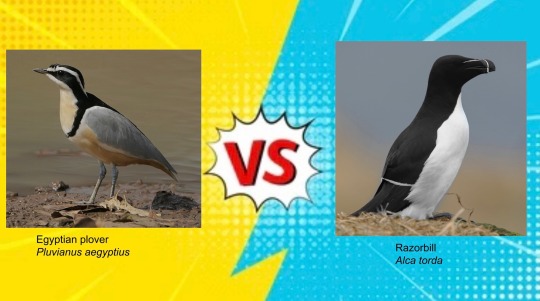
Both birds are stately and elegant, but who will make it to the next round?
Egyptian plovers are the only species in their family Pluvianidae, and not actually plovers. They live in tropical sub-Saharan Africa, and, interestingly, not in modern-day Egypt; they are called Egyptian plovers because the territory they live in used to be ruled by Egypt. These handsome birds are found mostly on sandbars in slow-flowing rivers. They use an unusual method of nesting: they bury the eggs in warm sand, then sit on top of them with a water-soaked belly to control the temperature. Adults may temporarily bury chicks in the sand too to hide them from potential dangers.
Razorbills, also called razor-billed auks or lesser auks, live across the North Atlantic but only come to shore to breed. They feed by swimming underwater to capture schooling fish, and can dive up to 120 m (395 ft) beneath the surface. Razorbills are monogamous and mate for life, and both parents spend equal amounts of time incubating their eggs and foraging for their chicks. They nest in rocky crevices along shorelines, with over half of the population breeding in Iceland. They are the closest living relative of the extinct great auk.
8 notes
·
View notes
Video
Ring-Necked Plover Enjoys Noodles! 🐦 A Beautiful & Unexpected Wildlife M...
#youtube#CoupleComedy FunnyPranks FoodPrank RelationshipGoals CoupleHumor HusbandWife EpicPranks ShortsComedy FunnyCouple Relatable Shorts ComedyShor
0 notes
Text
FOUR
The moon shone broad and bright upon the placid face of the Solway Firth, and showed a slight ripple upon the stakes, the tops of which were just visible above the waves.
SIR WALTER SCOTT, Redgauntlet (1824)
THE CLOCKS WENT forward today but there’d hardly be enough blue in the world to darn a sailor’s hanky. My ears, exposed after an out-of-season haircut, are red as hen’s heads as Nikki and I take in the windswept mudflats which Robert Burns called ‘this wild place of the world’. A heron pecks patina into flotsam; tuxedoed oystercatchers hurtle along the mud with their lame men’s gaits and then moan into a monochrome sky. To hoodwink their prey, plovers tap-dance on the beach pretending to be raindrops.
Three boys in shell suits stand around an observation viewer. ‘Quality’, offers the tallest of the trio, after discovering it isn’t coin-operated. He squints through it to England. ‘What the Butler saw’, I joke, ‘That’s where Edward the First cursed us before breathing his last.’ The three boys dander off, perplexed about butlers; an oyster-catcher pipes past, and a flock of timid redshanks retreats past the Altar Stane, more often than not under water, which has bounded the burgh of Annan since 1539.
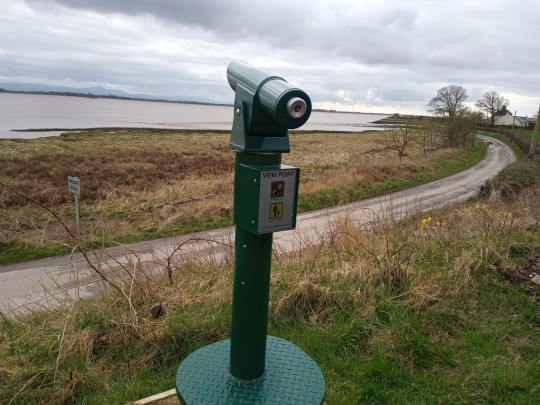
Before they moved to Lochmaben Robert the Bruce’s ancestors had a castle at Annan, and a running track and park now sit beneath its tree-colonised motte. A stone from the castle, with an inscription related to the Bruces, was somehow acquired by an Annan antiquarian, who took it with him when he moved to Devon. It was returned in 1927 and is now incorporated within the town hall. There is a story that Archbishop, later Saint, Malachy put a curse on Annan. When he had dined with Bruce at the castle, Bruce had promised to spare the life of a condemned man. However, he reneged on the deal – with the result that a vampire allegedly ran loose in the town in which Thomas Carlyle later went to school.
Chop all the wood from boats that sailed in the Solway Firth, and Bonfire Night could be celebrated the length and breadth of Scotland until they launch the first zebra into space. Horn-helmeted raiders, Roman warriors, English incursors, pirates, kings, folk heroes, brigands, smugglers, and lovers. They all came and went with swords, fire, trade, romance or murder. Hadrian put his ‘Roman wall’ up at Bowness-on-Solway on the shoulder of England, a mile from where we stand – across a wath that was used by interlopers for centuries. That wath or ford can be walked when the tide is out, but you’d better know the currents intimately or you’ll be struggling in quicksand before your brain can contemplate the meaning of M’ Aidez.
From Cumberland’s tussocks – an official Area of Outstanding Natural Beauty since 1964 –trains used to smoke their way across the sea on the longest bridge in Europe. We gaze at England from a lichened mound of concrete and mudstone with mini-ferns curling out of Scotland like croziers. Behind us the trains passed through a cutting that has doubled for decades as a way for dog walkers undeterred by the pipeline running bang down the middle, through which Chapelcross Nuclear Power Station discharged its shit into the sea.
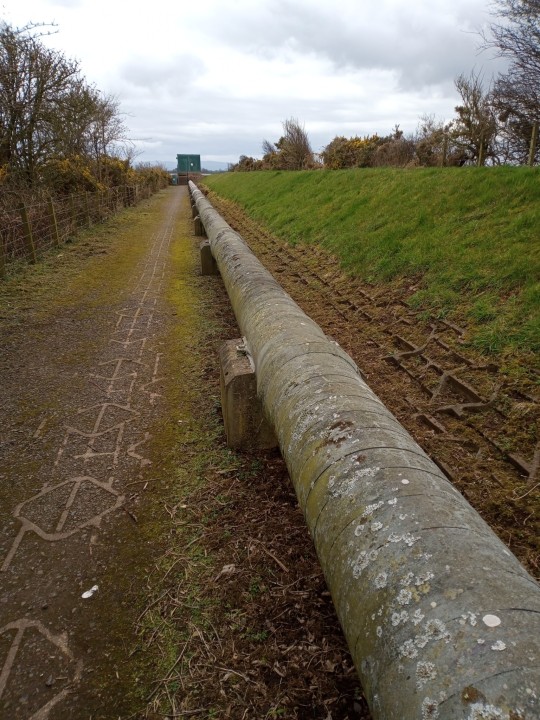
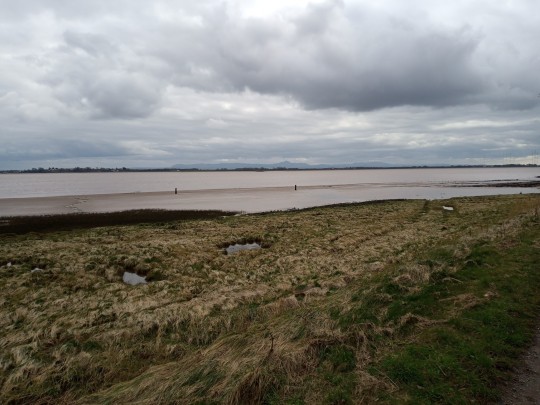
It’s March 2023. The first sod for the Solway Viaduct from Bowness-on-Solway to Annan was cut here 158 years ago today in a ceremony that featured ‘four navvies in smock frocks, red neckcloths, and white nightcaps ...... a mahogany barrow with the silver spade on their shoulders’. A cannon was fired, prayers were said, and big wigs sat in a decorated pavilion for their déjeuner à la forchette, and much speechifying and backslapping.


The idea for a viaduct had originated in 1830 in an anonymous pamphlet but The Cumberland Pacquet and Ware’s Advertiser called it ‘sublime, utopian, stupendous and bordering on certain of the Munchausen achievements’.
It took three years to build, but in 1881 ice floes wrecked it. It was repaired but it never quite recovered and was shut down in 1921. Notices went up to keep people off the bridge; however, thirsty Scots made their way across on Sundays to take advantage of more liberal English licensing laws, and there were cross-border romances for which the viaduct wasn’t a bridge too far. It was dismantled in 1935, and the scrap was recycled for armaments in Japan for its war with China. A signal box allegedly ended up being used as a garden shed.
What remains of a rusty tanker sits deck-deep in silt now behind an old warehouse that once rung with the sound of shipbuilders’ mallets. A local group pulled it out of view in 2020 with cash collected from flogging scrap bikes and shopping trolleys. Thousands of people once thronged the pier at Annan, an important shipbuilding port, whence steamers took folk to new worlds. A wooden lighthouse stood at Barnkirk point but it burned to the shore in 1975. Today a scarfed pensioner wheezes along the quay with smoky breath; and a subdued mongrel, oblivious of history, looks just as disconsolate.
Shawhill railway station, built on the verge of Annan for the viaduct traffic, is now a scrapyard. Back on the foreshore cinder path a decapitated man stands on a plinth – a bone of contention between his maker (who welds together bits of scrap and exhibits them) and others in the community, whom he regularly lambasts on his social media page. Metal Man began life in 2009 on a roundabout at the Tesco store in town, but he was beheaded in 2019. Since then, he has had a traffic cone for a head, then a football, a parrot’s head and a pig’s head. A month ago, a prankster sawed the statue’s haaf-net and fish off. Goodness knows how he ended up on the shore here where for generations real haaf-netters have battled the currents and tides.


Old Annanites speak of haaf-netting in reverential tones: it has been pursued since Viking times and is enshrined in royal charters. A haaf-net resembles a portable football goalmouth with a rectangular frame and three legs. The top beam of the frame is 18 feet long, the length of the oar of a longboat; when a fish swims into the net the frame’s legs float to the surface and the fish is netted and clobbered on the head with a nep, a priest or a killer. Well, that is what used to happen, but legislation introduced in 2016 bans the killing of salmon, and fewer and fewer men feel like paying the near £40 annual licence fee when they cannot take a single fish home. The tradition is certain to die out.
Leistering was another unusual form of fishing practised by the men of the Solway. A leister was a four-pronged, twenty-foot-long javelin, which killed fish in huge quantities. Richard Franck, a Cromwellian trooper, was the first person to report on Scotland’s salmon-fishing. The Cambridge-educated sea captain travelled through Carlisle, Dumfries, Glasgow, Stirling, Perth, Forfar, Loch Ness; Sutherland, Caithness, Cromarty, Aberdeen, Dundee, St. Andrews, Edinburgh, and Berwick.
Franck saw the mounted men of the firth galloping along the shallows spearing salmon (Northern Memoirs, 1694). Sir Walter Scott also gave leistering a mention. In Redgauntlet, Darsie Latimer wrote to Alan Fairford, of the day he was rescued from straying into the Solway quicksands: ‘...they chased the fish at full gallop, and struck them with their barbed spears, as you see hunters spearing boars in the old tapestry. The salmon, to be sure, take the thing more quietly than the boars; but they are so swift in their own element, that to pursue and strike them is the task of a good horseman, with a quick eye, a determined hand, and full command both of his horse and weapon.’ Latimer lingered on the sands and looked to the English shore that was ‘still gilded by the sun’s last rays, and, as it seemed, scarce distant a mile from me’.
For nearly half a century Chapelcross nuclear power station was a familiar landmark outside Annan. I was one of thousands of people who watched its four chimneys being demolished in 2007. Some souls were sentimental to the point of weeping. It was, indeed, the end of an era for a business that had employed three generations and had brought prosperity to a town which, in 1727, Daniel Defoe had found to be in ‘irrevocable decay’. It was hooray for me when the towers fell, though. Goodbye, plutonium. Goodbye, tritium. There have been proposals for a wood-burning power station there, using sustainable coppiced willows, and an adjacent solar farm has been approved. It remains mothballed.
In the 1960s there had been plans for an atomic metropolis that would have spanned the firth. There would have been a circuit-linear Solway City for 50,000 people, and a new airport. Forty years later there is another proposal – to route an ‘electric bridge’ from Annan to Bowness-on-Solway using energy from the world’s third greatest tidal bore. It would create a pedestrian and cycle route between England and Scotland with the usual razzmatazz for tourists and have enough in its locker to power 60,000 homes. The decommissioning of Chapelcross won’t be complete for some 80 years. Meanwhile, Annan’s dreams of a transformed harbour, a tourist hub, were thwarted in 2023 when an application for £8 million from Michael Gove, who had the Tory government’s portfolio for the Orwellian concept of ‘levelling up’, failed.
0 notes